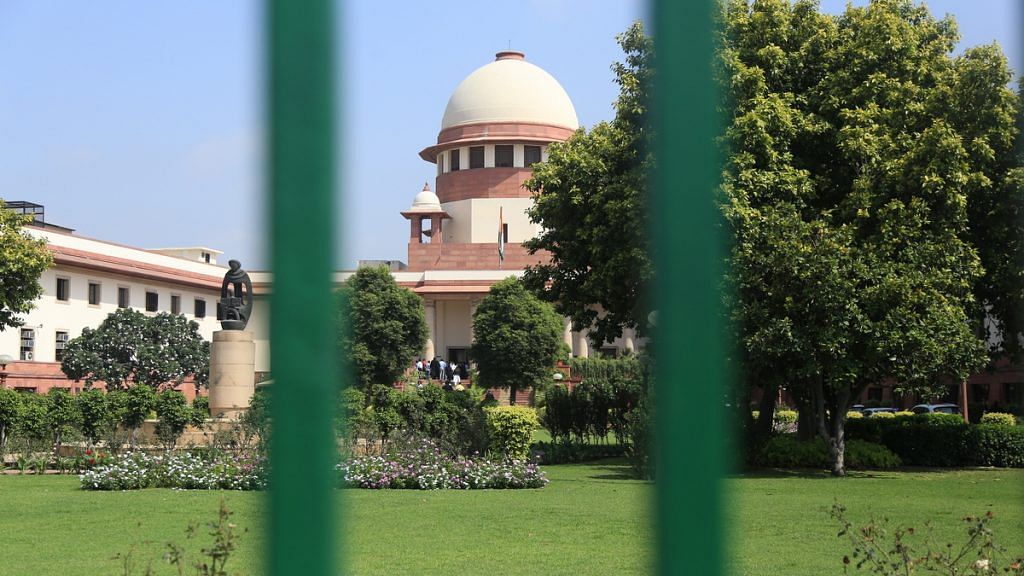How many Indians remember B.N. Rau? He was an eminent jurist, and served as a Judge of the Calcutta High Court from 1939. He was also a judicial ‘lateral entrant’.
B.N. Rau was a member of the International Court of Justice Bench at The Hague, and the first from India. Earlier, he was also the constitutional adviser to the Constituent Assembly of India. He was the most important person after B.R. Ambedkar in drafting the Constitution of India. The draft Constitution that was debated in the Constituent Assembly, later amended to become the Constitution of India, was his brainchild. The Drafting Committee of the Constituent Assembly had accepted his draft virtually without any change.
But, B.N. Rau was not an advocate, or member of the judicial services. He was a civil servant. He entered the Indian Civil Services in 1910, and served with distinction until his elevation to the high court.
Also read: Subramanian Swamy was right. Modi’s lateral entry plan will make reservations irrelevant
He was also closely involved in drafting key provisions of the Government of India Act, 1935, which later became the template of the Constitution of India.
B.N. Rau was also a prolific author and wrote on many aspects of law and jurisprudence.
He was not the only civil servant to serve in the high court. There were many like him, the majority being Englishmen. Justice Donald Falshaw, from the civil service batch of 1928, became the Chief Justice of the Punjab High Court in 1966, and Justice William Broome, civil service batch of 1932, retired as the senior-most puisne judge of the Allahabad High Court.
It was possible in those times for civil servants to choose to officiate on the judicial side. Many officers did that. They were eminently qualified to do that, both by virtue of their training as presiding officers of revenue courts, as well as of the criminal courts. As such, they were well versed with the provisions of the Criminal Procedure Code (CrPC), and the Civil Procedure Code (CPC).
Also read: 5 reasons why IAS officers are alarmed by Modi govt’s lateral entry push
However, after the Indian Independence Act, 1947, and promulgation of the Constitution of India, the practice simply disappeared. With the Supreme Court of India becoming the key figure in appointments to the constitutional courts, the influential advocate chambers and established law firms soon appropriated the entire judiciary. Today, the highest judiciary has become an institution ‘of the Bar, by the Bar, and for the Bar’. Even though a provision exists in the Constitution [Article 124 (3) (c)] to appoint eminent jurists to the higher judiciary, not a single such appointment has ever been made.
It is in this background that we ought to examine the whole issue of Indian Judicial Services. In an era when we are discussing lateral entry into even the IAS and other all-India and central services, I find no justification for reviving this old proposal. If anything needs to be done, it is streamlining the appointment to the courts through a transparent procedure, including and not limited to an examination.
Such an examination, or procedure, should also include the members of the IAS and other services, if they fulfil the qualifications. All IAS and civil services have greater experience of dealing with, operationalising, and enforcing law; doing legislative drafting; and implementing constitutional provisions. They also come through probably the most gruelling examination in the world that tests their intelligence and diligence. They should be allowed to take this exam, along with members of the lower judiciary and the Bar. Let the best go to the Bench.
This is something that I have been advocating in the context of the lateral entry to bureaucracy as well. The way lateral entry is being done right now may not stand the test of transparency, and may not attract the best and the brightest as the positions are contractual. There ought to be another examination for regular appointments to a Central Superior Service (such a service used to exist in British India from 1924, and comprised of all-India services and central services).
Also read: IIT, IIM and Oxford alumni make way into govt as lateral entry specialists
To be eligible, the candidates should possess either 16 years of service in any of Class I services of the Union, or at a certain level in the states, or the person should have served in certain designated capacities at a senior level in the private sector. This would eliminate the inherent bias in the Central Staffing Scheme. The induction should be at the joint secretary level. At the same time, all officers eligible to take this test should also be eligible to take the examination for appointment to the higher constitutional courts, if they possess a law qualification.
This system would not only streamline the lateral entry system in the highest echelons of the Union, but would also allow the judiciary to be taken out of isolation and given the best talent available. It is high time that the Judiciary ceased to be a closed cosy club (CCC).
The author is the additional chief secretary, Rajasthan and former secretary of the Rajasthan Cricket Association. Views are personal.
